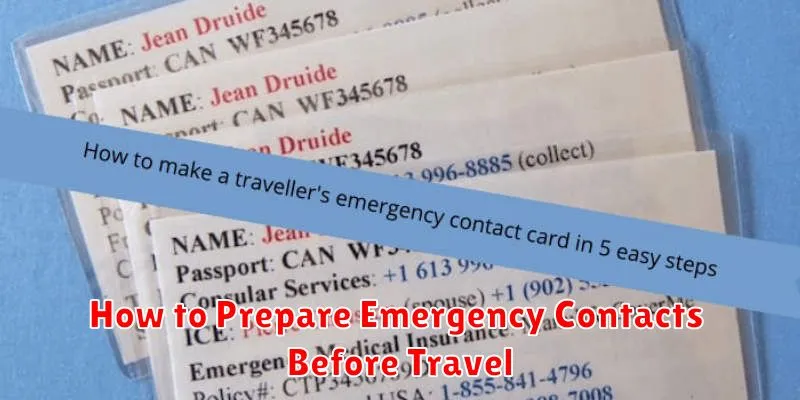Traveling can be an enriching experience, but unforeseen circumstances can arise, highlighting the importance of being prepared. One crucial aspect of pre-trip planning often overlooked is establishing emergency contacts. Before embarking on your next adventure, understanding how to prepare emergency contacts properly can provide peace of mind for both you and your loved ones. This article will guide you through the necessary steps to ensure you have a comprehensive emergency contact plan in place, covering everything from who to include to how to share information effectively. By taking these proactive measures, you can mitigate potential risks and travel with confidence, knowing you are well-prepared for any situation.
From minor incidents requiring assistance to more serious emergencies, having readily accessible emergency contact information can be invaluable. This preparedness allows for swift communication with family, friends, or designated individuals in case you require help. This article will address critical aspects of establishing your emergency contacts, such as selecting appropriate individuals, compiling essential contact details, and ensuring the information is readily available when needed. Whether you’re planning a domestic trip or venturing internationally, having a well-defined emergency contact strategy is a crucial component of responsible travel planning.
Why Emergency Contact Info Matters
Having readily available emergency contact information is crucial during travel. In unforeseen situations like accidents, illnesses, or natural disasters, it allows responders to quickly contact your loved ones and inform them of your situation.
This expedites necessary actions, ensuring you receive timely assistance and support. It can also help authorities make informed decisions about your care, especially if you’re unable to communicate yourself.
Whom to Include and How to Store It
Compile a list of essential contacts. This should include family members, close friends, and your primary care physician. For international travel, add your embassy or consulate’s contact information.
Store this information securely and accessibly. Consider both digital and physical formats. Digitally, save contacts in your phone and a secure cloud service. Physically, carry a printed copy in your wallet or travel bag.
Sharing Contact Info with Travel Partners
Sharing your emergency contact information with your travel companions is crucial. Ensure everyone in your group has a copy of important numbers. This includes not only emergency contacts back home, but also each other’s contact details.
Consider creating a shared document or list with names, phone numbers, addresses, and any relevant medical information. This simplifies communication if someone gets separated or an emergency occurs.
Digital and Paper Copies

Ensure the safety and accessibility of your emergency contacts by creating both digital and physical copies. Scan all essential documents, including your passport, visa, driver’s license, and medical information. Save these digital copies securely in cloud storage or on a password-protected USB drive.
In addition to digital copies, print hard copies of these documents and store them separately from the originals. Keep one set with you and leave another set with a trusted friend or family member. This redundancy ensures access to crucial information should your devices or originals become lost or damaged.
Apps That Help in Emergencies
When traveling, unforeseen emergencies can arise. Fortunately, several apps can provide critical assistance. These apps can help you connect with local emergency services, translate vital phrases, or share your location with designated contacts.
Consider downloading a reliable first aid app that offers offline access to important medical information. These apps can guide you through administering basic first aid until professional help arrives. Additionally, a trusted SOS app can quickly alert pre-selected contacts of your location and situation if you require immediate assistance.
Updating Information Regularly
Maintaining up-to-date emergency contact information is crucial for safe travels. Regularly review and update your list before each trip, even if you travel frequently. Life changes such as new phone numbers, addresses, or medical conditions necessitate these updates.
Ensure the information is easily accessible, both digitally and physically. Consider storing a copy in your luggage, separate from your phone. Inform your contacts about your travel plans and the best way to reach you in case of an emergency.
Practicing Emergency Drills
While having a plan is crucial, practicing it is equally important. Drills transform theoretical knowledge into practical application, ensuring a more effective response during a real emergency. This includes practicing communication protocols, designated meeting points, and evacuation procedures.
Consider different scenarios like losing your passport, experiencing a medical emergency, or encountering natural disasters. Regularly practicing these drills, even briefly, will significantly improve your preparedness and reaction time in a real crisis.

